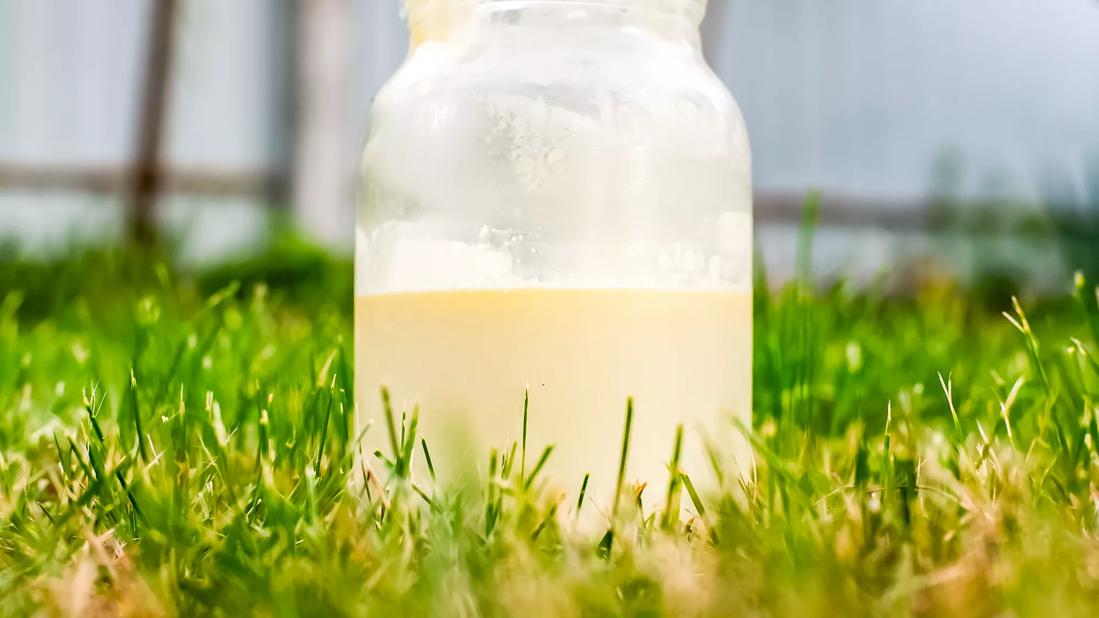Advertisement
Drinking unpasteurized milk can cause issues like nausea, diarrhea, vomiting or, in some cases, serious illness

Believe it or not, there’s a rich history of how humans have prepared their milk. It’s been more than 120 years since Louis Pasteur invented “pasteurization,” a fail-safe process for killing the bacteria raw milk can harbor, including Salmonella, E. coli and Listeria.
Advertisement
Cleveland Clinic is a non-profit academic medical center. Advertising on our site helps support our mission. We do not endorse non-Cleveland Clinic products or services. Policy
Today, milk is a family staple for good reason. The calcium it contains helps build strong bones and teeth while keeping your heart beating, blood clotting and muscles and nerves functioning.
But in recent years, a small but growing number of people have started to prefer unpasteurized — or raw — milk and milk products instead of the more standard pasteurized milk. They believe raw milk offers more nutrients, causes fewer allergies and promotes overall health.
But despite this rise in drinking milk straight from the cow, many experts warn against the health risks of drinking raw milk.
Registered dietitian Erin Rossi, RD, LD, explains how to enjoy your milk in the safest way possible.
Is drinking raw milk healthier? Most evidence points to a firm “no.” The U.S. Centers for Disease Control and Prevention (CDC) reports that unpasteurized milk is more likely than pasteurized milk to cause foodborne illness that can lead to hospitalization.
There’s a reason the milk coming from cows, sheep, goats or other animals needs to be pasteurized before it hits our lattes or cereal bowls. The pasteurization process kills bacteria to make the milk safe to drink. “A little processing goes a long way in preventing the illnesses associated with raw milk,” says Rossi.
Drinking raw milk can increase your risk for illnesses like:
Advertisement
Additionally, drinking raw milk can put you at risk for highly pathogenic avian influenza (HPAI), also known as bird or avian flu. While avian flu is rare in humans, there are some known cases. The U.S. Food and Drug Administration (FDA) issued an advisory explaining that this virus can be transmitted by wild birds to other species, including dairy cattle.
And milk from infected cows can carry the HPAI virus. Though it’s still unclear whether you can become infected with HPAI by drinking contaminated raw milk, the FDA still considers it a high-risk food and cautions against consuming it.
Drinking raw milk doesn’t affect everyone equally. Most healthy people recover quickly from the vomiting, diarrhea, abdominal pain and flu-like symptoms that an infection stemming from raw milk can cause.
But older people, children, pregnant people and those with weaker immune systems can quickly get very sick. Symptoms can become chronic, severe and even life-threatening.
You should see a healthcare provider promptly if you become ill after consuming a raw milk product — especially if you’re pregnant.
Raw milk advocates believe unpasteurized milk provides more nutrients, can prevent allergies and asthma, and even relieve lactose intolerance. It’s important to note that there isn’t any evidence that raw milk can help with these conditions in any way.
You may have heard about some other myths around pasteurized vs. unpasteurized milk as well. Here are the raw facts:
So, what makes a milk “pasteurized”? “Pasteurizing milk means you’re heating it to 161 degrees Fahrenheit (71.66 degrees Celsius) for just 20 seconds. This kills any and all bacteria,” explains Rossi.
Most U.S. milk and milk products contain pasteurized milk or cream or are processed in a way that destroys bacteria. But you can still find products made with raw milk, including:
Advertisement
So, take a minute to read a product’s label to make sure you see the word “pasteurized.” If it’s not there, the product may contain raw milk. Take special care with milk products sold at farm stands or farmer’s markets. Don’t buy them unless you can confirm they’ve been pasteurized.
Drinking milk and consuming dairy products is a great way to include calcium and vitamin D in your diet. But while these benefits are present in pasteurized milk, they aren’t made any better when the milk is “raw.” Instead, you’re at a greater risk of getting a bad stomach ache and, in some cases, more serious symptoms.
“Our food supply is among the safest in the world, but it’s not always risk-free,” points out Rossi. “Foodborne illnesses are preventable with proper handling and processing — including pasteurization, which minimizes risks while preserving vital nutrients.”
Advertisement
Learn more about our editorial process.
Advertisement

Keep cooked rice and pasta in your fridge — not on your counter — to help prevent this sneaky food poisoning

No single food will increase your milk, but an overall healthy diet will help

Be sure to check the labels of common foods like canned tuna, bread, hot dogs and chocolate

This dairy product can help you lose weight, manage blood sugar and strengthen bones

Rich in calcium and protein, milk has 18 of 22 essential nutrients that your body needs

A superfood, kefir is loaded with vitamins, minerals and nutrients

Mushroom poisoning is real — and it can cause liver failure

Focus on your body’s metabolic set point by eating healthy foods, making exercise a part of your routine and reducing stress

PFAS chemicals may make life easier — but they aren’t always so easy on the human body

While there’s little risk in trying this hair care treatment, there isn’t much science to back up the claims